Low-Cost Nanostructured Thin Films as Covert Laser Readable Security Tags for Large-Scale Productions Tracking
Abstract
:1. Introduction
- Their cost must be marginal in the price of the product;
- Identification must be simple, fast and cheap;
- Adjustable fabrication parameters must be fairly numerous to allow a precise coding of the different batches.
2. Materials and Methods
- Polymer materials: PC, PI and PET;
- Film thickness, ranging from 6 to 50 µm;
- Pore diameter, down to 10 nm;
- Pore density, from a few 109 pores/cm2 down to single pore structures [6].
3. Results
3.1. n-CLR Surface Structure Analysis
3.2. n-CLR Speckle Image Analysis
- In the center, the n-CLR surface made by template synthesis. It appears quite dark in LED confocal illumination mode and exhibits speckles pattern. The direct laser illumination mode also exhibits speckles pattern, but brighter in contrast.
- At the periphery of the image, the gold-coated membrane that also exhibits its own speckles pattern. It is overexposed in the LED confocal mode, since gold is more reflective than nickel, but less bright than the n-CLR in the laser illumination mode.
- Between the two previous areas appears a “blind” area surrounding the n-CLR center, in which no speckle can be detected. This is the most interesting and unexpected feature of this work. In the in LED confocal illumination mode, the membrane top surface and its defects can then be seen in this area, which appears completely dark in the laser mode.
3.3. Full Patterned n-CLR Speckle Image
4. Discussion
- Repeatability: it is to achieve a finer control of the template synthesis NWs’ growth conditions in order to obtain the desired texture of n-CLRs in both continuous or granular surfaces. The foreseen techniques are at one hand by setting up sequenced or pulsed ED and at other hand by using other NWs’ materials, like Cu or Ni alloys.
- Homogeneity: it is to insure equal growth conditions for each n-CLR in a single ED run. Here, current efforts are being made to switch from the actual all-purpose ED cell to a newly designed ED cell dedicated to n-CLR synthesis. The functional specifications of this new cell are of course to keep the fabrication steps number low, but also to mimic, as closely as possible, the current fabrication processes of PCB makers, to keep this technology open to cost-effective large-scale production.
- Surface recognition: it is to bind a given random speckle pattern to a given surface texture. Ongoing works are in progress, which couple confocal microscopy images of n-CLR surfaces to speckles images numerical simulations, to be compared with real speckles images.
- Fast reading: it is to identify a given n-CLR surface by its random speckle patterns as fast as possible [13,14]. Here, the goal is to identify the most relevant correlation parameters to be checked by existing images analysis algorithms [15]. To achieve this, a machine learning project is about to start, which aims to process the database of more than 1000 speckle images acquired during the present work. This work will address to the most effective numerical treatment of speckles images, and thus to fast n-CLR tags identification.
5. Conclusions
Author Contributions
Funding
Data Availability Statement
Acknowledgments
Conflicts of Interest
References
- Ren, W.; Lin, G.; Clarke, C.; Zhou, J.; Jin, D. Optical Nanomaterials and Enabling Technologies for High-Security-Level Anticounterfeiting. Adv. Mater. 2019, 32, e1901430. [Google Scholar] [CrossRef] [PubMed]
- Smith, A.F.; Skrabalak, S.E. Metal nanomaterials for optical anti-counterfeit labels. J. Mater. Chem. C 2017, 5, 3207–3215. [Google Scholar] [CrossRef]
- Blau, Y.; Bar-On, O.; Hanein, Y.; Boag, A.; Scheuer, J. Meta-hologram-based authentication scheme employing a speckle pattern fingerprint. Opt. Express 2020, 28, 8924–8936. [Google Scholar] [CrossRef] [PubMed]
- Tomescu, R.; Parvulescu, C.; Cristea, D.; Comanescu, B.; Pelteacu, M. Low cost technology for the fabrication of anti-counterfeiting microtaggants. J. Micromech. Microeng. 2021, 31, 035008. [Google Scholar] [CrossRef]
- Pérez-Mitta, G.; Toimil-Molares, M.E.; Trautmann, C.; Marmisollé, W.A.; Azzaroni, O. Molecular Design of Solid-State Nanopores: Fundamental Concepts and Applications. Adv. Mater. 2019, 31, e1901483. [Google Scholar] [CrossRef] [PubMed]
- Enculescu, I.; Siwy, Z.; Dobrev, D.; Trautmann, C.; Molares, M.T.; Neumann, R.; Hjort, K.; Westerberg, L.; Spohr, R. Copper nanowires electrodeposited in etched single-ion track templates. Appl. Phys. A 2003, 77, 751–755. [Google Scholar] [CrossRef]
- it4ip. Available online: www.it4ip.be (accessed on 31 July 2021).
- Lindeberg, M.; Hjort, K. A comprehensive study of ion track enabled high aspect ratio microstructures in flexible circuit boards. Microsyst. Technol. 2004, 10, 608–621. [Google Scholar] [CrossRef]
- Péter, L. Electrochemical Methods of Nanostructure Preparation; Springer: Cham, Switzerland, 2021. [Google Scholar] [CrossRef]
- Matei, E.; Enculescu, I.; Toimil-Molares, M.E.; Leca, A.; Ghica, C.; Kuncser, V. Magnetic configurations of Ni–Cu alloy nanowires obtained by the template method. J. Nanoparticle Res. 2013, 15, 1863. [Google Scholar] [CrossRef]
- Lindeberg, M.; Yousef, H.; Rödjegård, H.; Martin, H.; Hjort, K. A PCB-like process for vertically configured thermopiles. J. Micromech. Microeng. 2008, 18, 065021. [Google Scholar] [CrossRef] [Green Version]
- Jackson, J.J.; Puretzky, A.A.; More, K.L.; Rouleau, C.M.; Eres, G.; Geohegan, D.B.; Puretzky, A. Pulsed Growth of Vertically Aligned Nanotube Arrays with Variable Density. ACS Nano 2010, 4, 7573–7581. [Google Scholar] [CrossRef] [PubMed]
- Carnicer, A.; Javidi, B. Optical security and authentication using nanoscale and thin-film structures. Adv. Opt. Photonics 2017, 9, 218–256. [Google Scholar] [CrossRef] [Green Version]
- Mwema, F.M.; Akinlabi, E.T.; Oladijo, O.P.; Fatoba, O.S.; Akinlabi, S.A.; Tălu, S. Advances in manufacturing analysis: Fractal theory in modern manufacturing. In Modern Manufacturing Processes; Woodhead Publishing: Sawston, UK, 2020; pp. 13–39. [Google Scholar] [CrossRef]
- Gonzalez, R.C.; Woods, R.E.; Eddins, S.L. Digital Image Processing Using Matlab, 3rd ed.; Gatesmark Publishing: Knoxville, TN, USA, 2020. [Google Scholar]
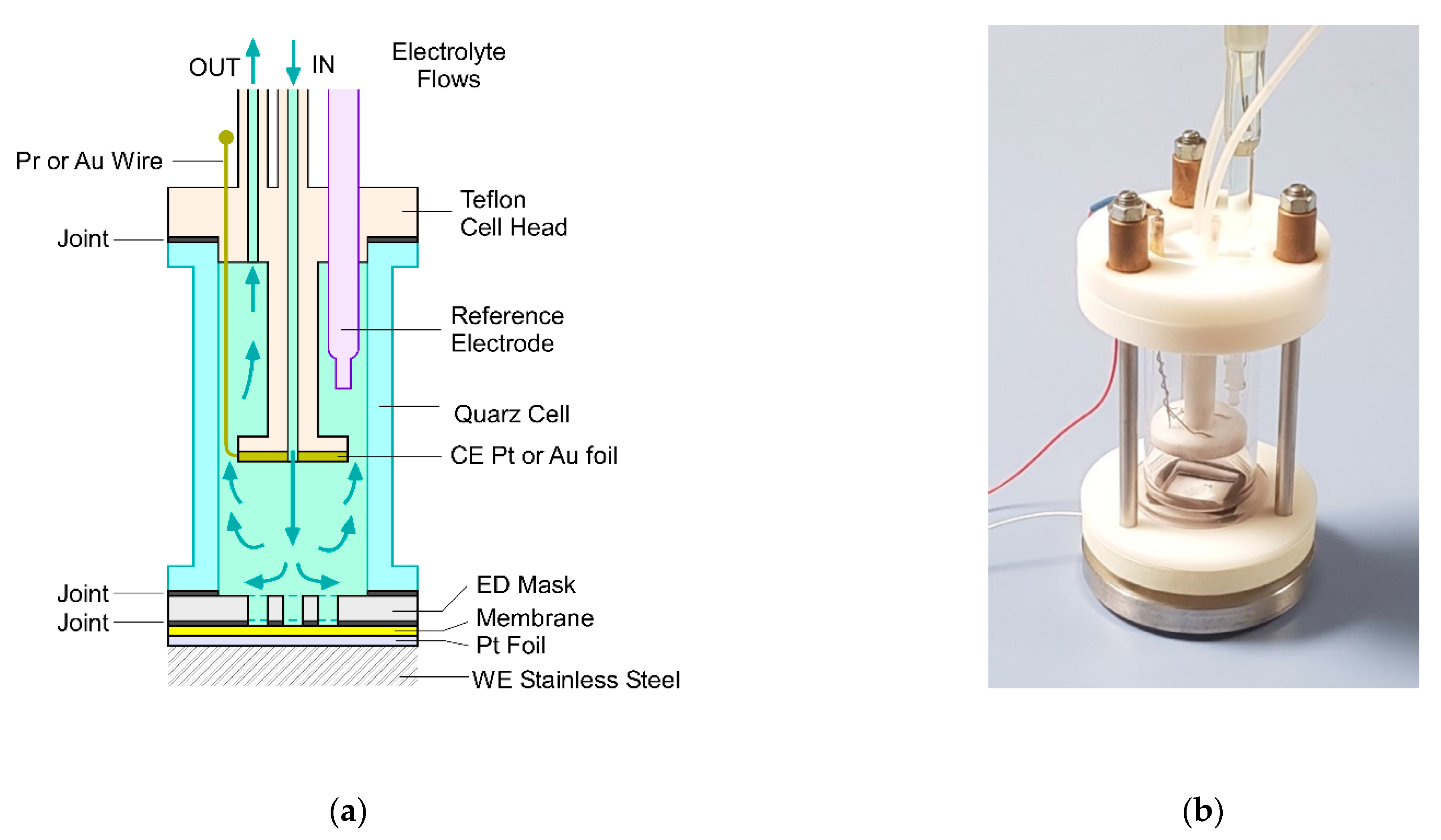
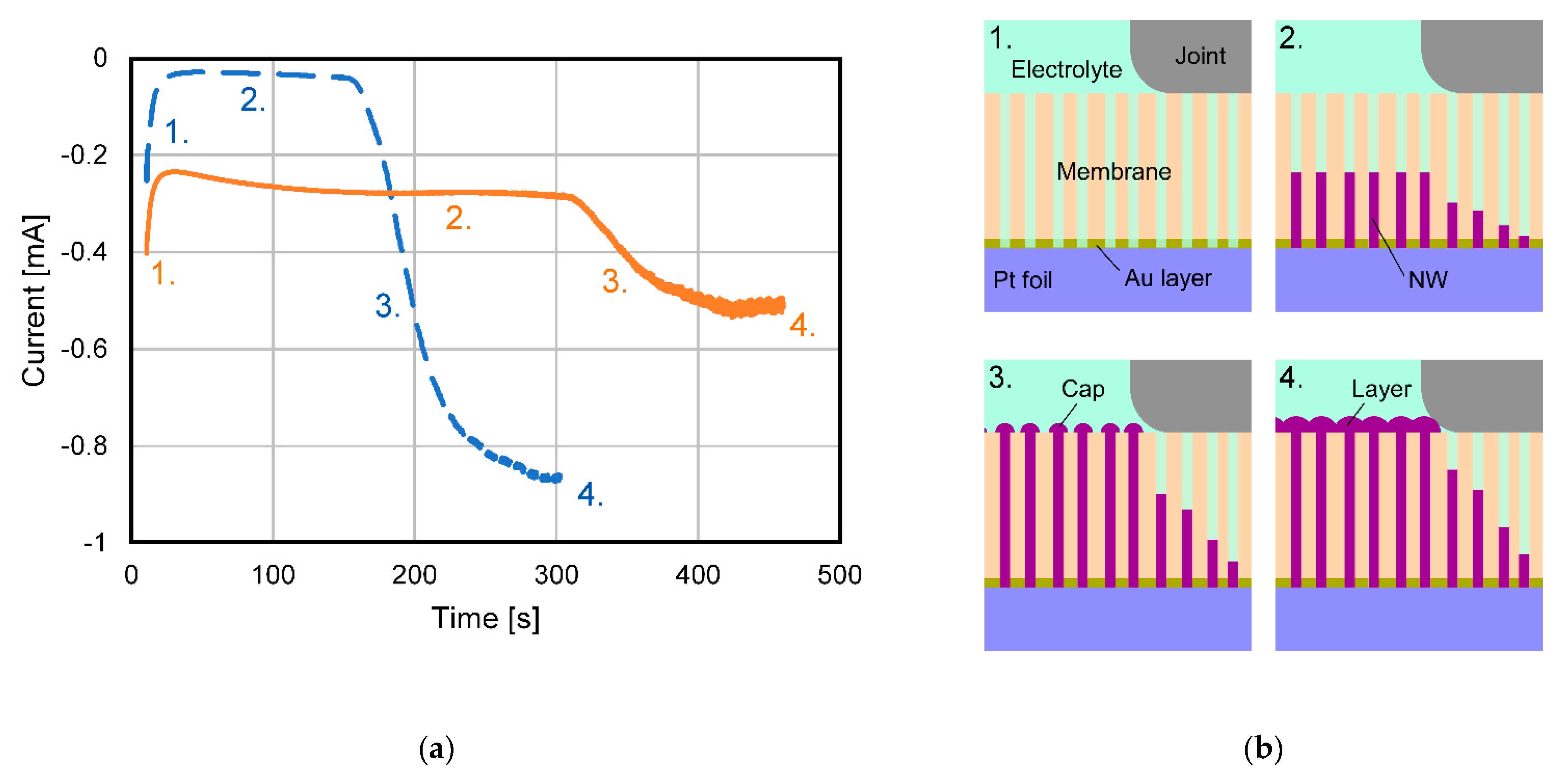
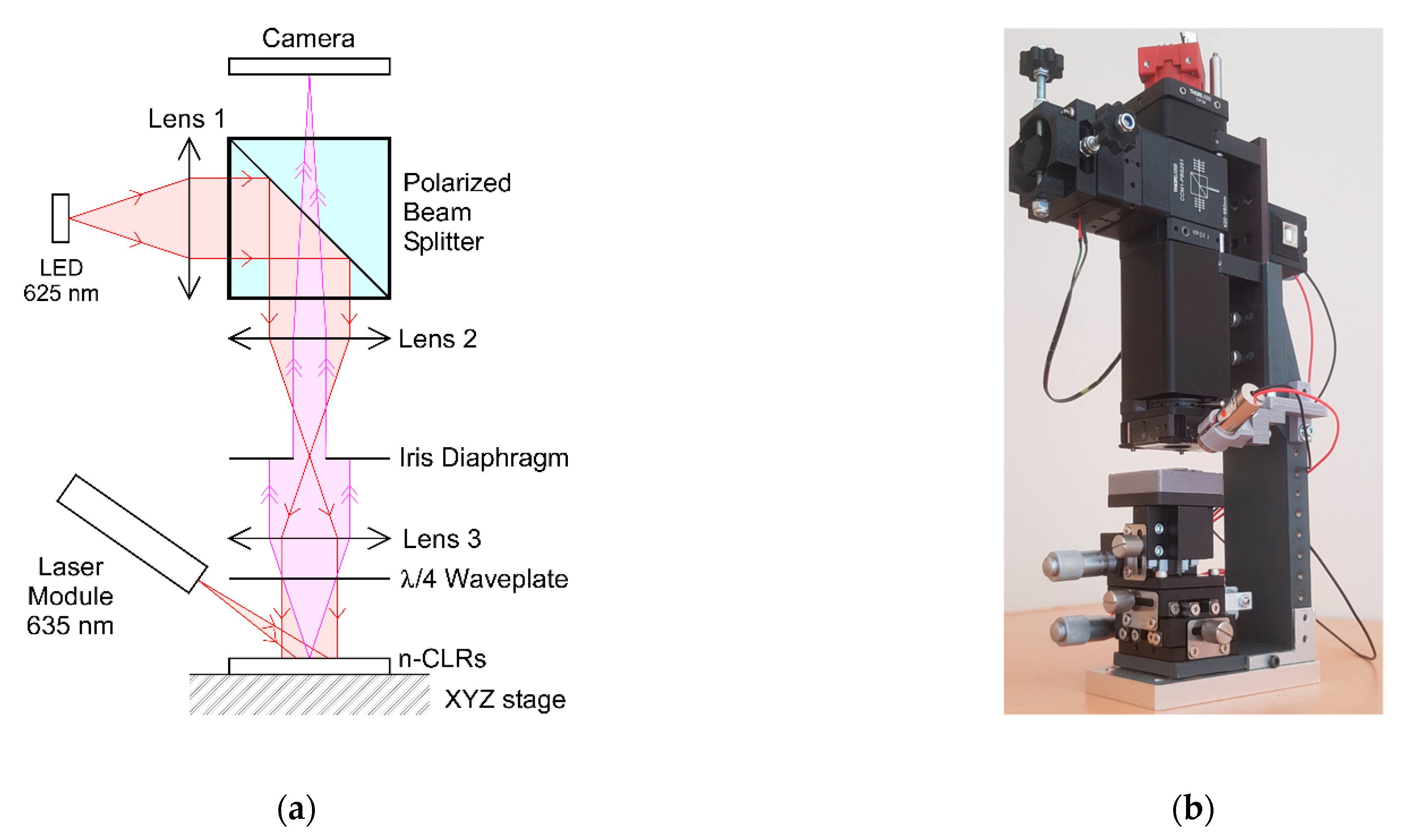
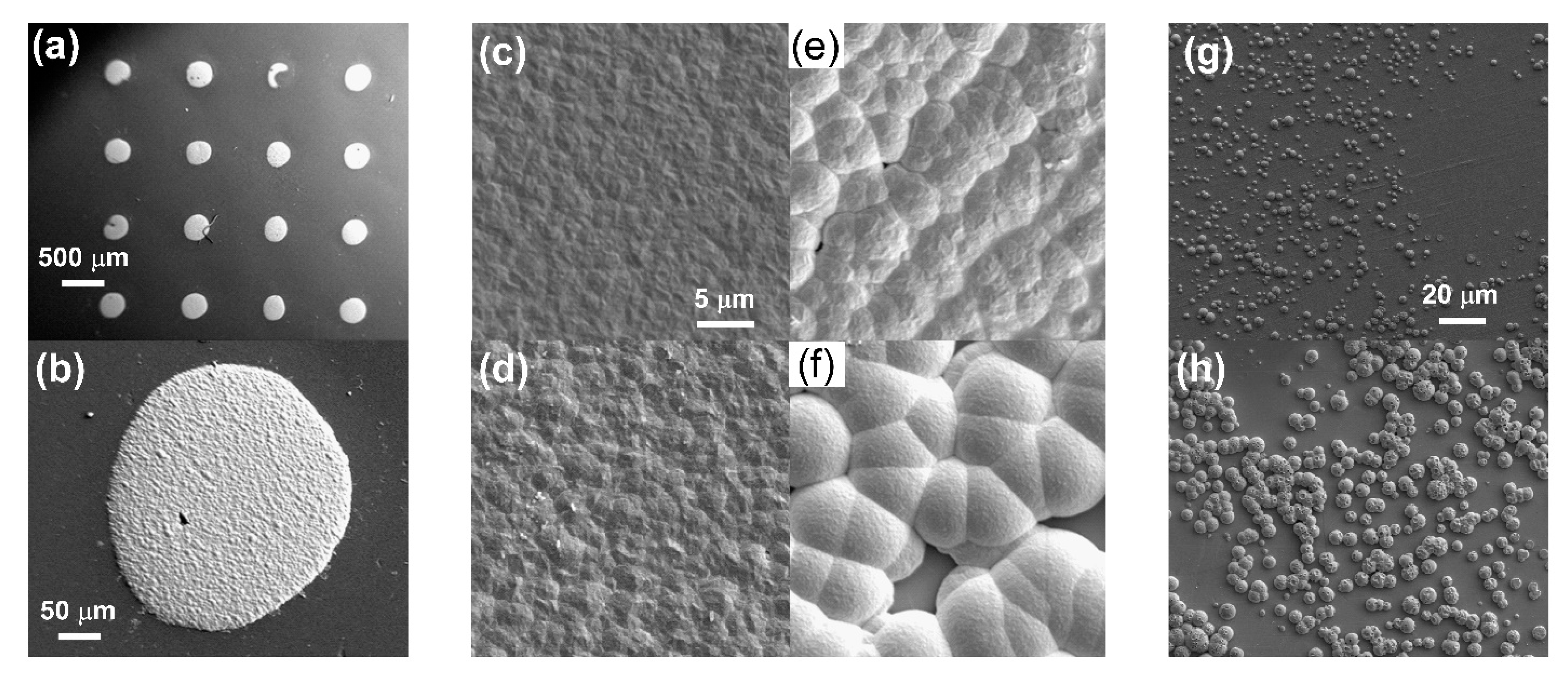
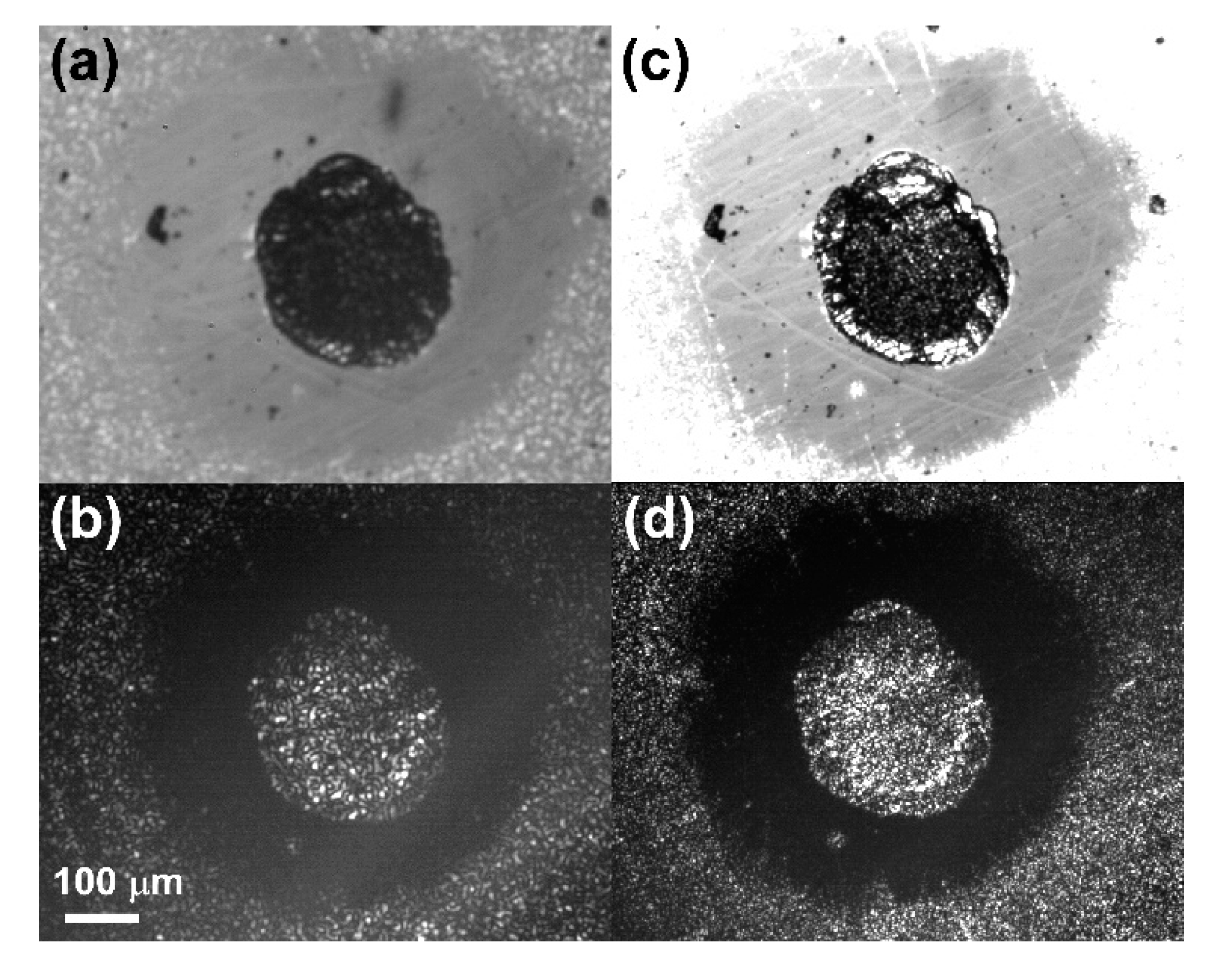

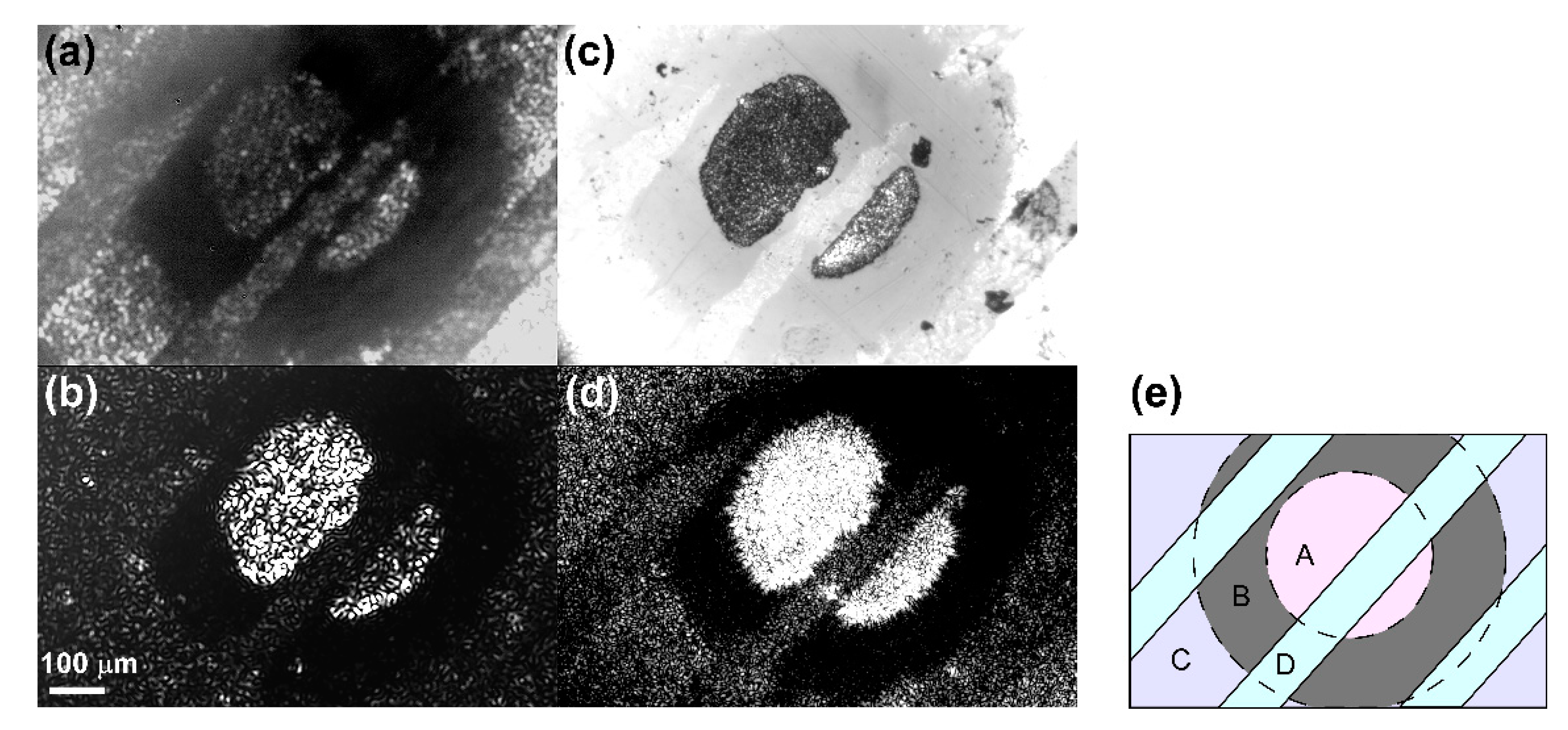

| Membrane | Pore Density | Pore Diameter | Thickness | Polymer |
|---|---|---|---|---|
| A | cm−2 | 50 nm | 25 µm | PI |
| B | cm−2 |
| Part | Provider | Reference |
|---|---|---|
| Lens 1 | Thorlabs™ | AC080-010-A-ML |
| Lens 2 | Thorlabs™ | AC254-080-A-ML |
| Lens 3 | Thorlabs™ | AC080-016-A-ML |
| Polarized Beam Splitter | Thorlabs™ | CCM1-PBS251 |
| Iris Diaphragm | Thorlabs™ | CP20S |
| Quarter Wave-Plate | Thorlabs™ | WPQ10M-633 |
| LED | OSRAM™ | LR G6SP |
| Laser Module | Thorlabs™ | PL202 |
| Camera | Allied Vision™ | AV ALVIUM 1800U-500M-CH-C |
| Picture | Magnification | Acceleration Voltage [kV] | Working Distance [mm] |
|---|---|---|---|
| 4a | 50 | 10.00 | 8.12 |
| 4b | 500 | 10.00 | 8.07 |
| 4c | 5000 | 5.00 | 6.29 |
| 4d | 5000 | 5.00 | 5.48 |
| 4e | 5000 | 5.00 | 5.31 |
| 4f | 5000 | 5.00 | 5.58 |
| 4g | 1000 | 5.00 | 5.39 |
| 4h | 1000 | 5.00 | 5.62 |
| Physical Control Parameter | Speckle Image Features |
|---|---|
| Membrane polymer | Bare membrane speckles |
| Pore density | Granular surface speckles |
| Metal coating pattern | Metal coating speckles |
| ED mask pattern | n-CLRs surfaces speckles |
| ED mask pattern | “Blind” dark speckleless area |
| Material for NWs ED | n-CLR surface reflectivity |
| ED voltage | n-CLR surface texture, roughness |
| ED duration time | Granular to continuous n-CLR surfaces |
| Iris diaphragm aperture | Speckle size and number |
Publisher’s Note: MDPI stays neutral with regard to jurisdictional claims in published maps and institutional affiliations. |
© 2021 by the authors. Licensee MDPI, Basel, Switzerland. This article is an open access article distributed under the terms and conditions of the Creative Commons Attribution (CC BY) license (https://creativecommons.org/licenses/by/4.0/).
Share and Cite
Gravier, L.; Salvadé, Y.; Pidoux, D.; Maritz, J.; Laratta, M. Low-Cost Nanostructured Thin Films as Covert Laser Readable Security Tags for Large-Scale Productions Tracking. Appl. Nano 2021, 2, 319-329. https://doi.org/10.3390/applnano2040023
Gravier L, Salvadé Y, Pidoux D, Maritz J, Laratta M. Low-Cost Nanostructured Thin Films as Covert Laser Readable Security Tags for Large-Scale Productions Tracking. Applied Nano. 2021; 2(4):319-329. https://doi.org/10.3390/applnano2040023
Chicago/Turabian StyleGravier, Laurent, Yves Salvadé, Damien Pidoux, Julien Maritz, and Marco Laratta. 2021. "Low-Cost Nanostructured Thin Films as Covert Laser Readable Security Tags for Large-Scale Productions Tracking" Applied Nano 2, no. 4: 319-329. https://doi.org/10.3390/applnano2040023
APA StyleGravier, L., Salvadé, Y., Pidoux, D., Maritz, J., & Laratta, M. (2021). Low-Cost Nanostructured Thin Films as Covert Laser Readable Security Tags for Large-Scale Productions Tracking. Applied Nano, 2(4), 319-329. https://doi.org/10.3390/applnano2040023





